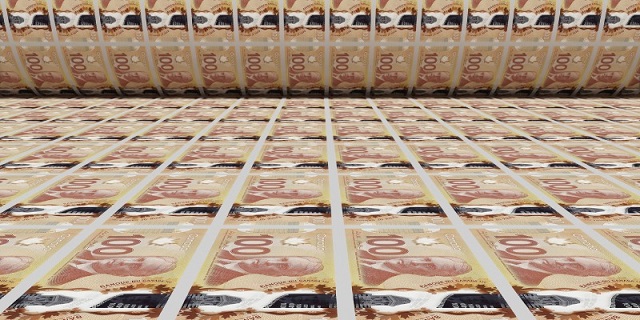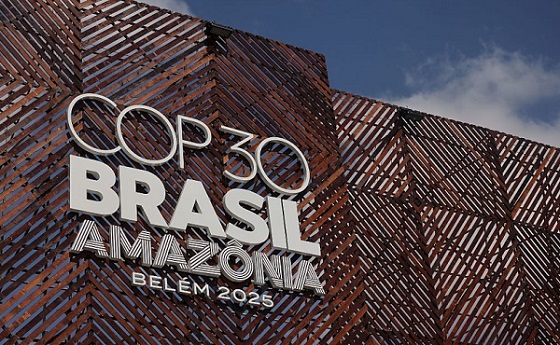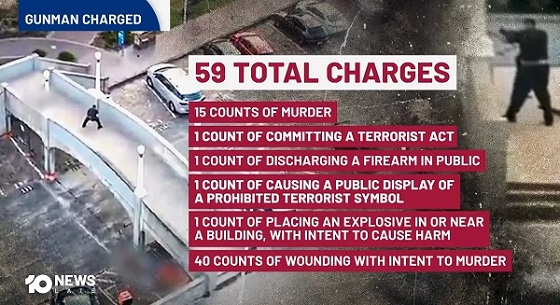Business
There are smart ways to diversify our exports

From the Fraser Institute
By Philip Cross
The Bank of Canada recently cut interest rates again, with further cuts likely in response to Donald Trump’s threat to impose tariffs on Canadian exports. This continues the Bank’s reflexive turn to lower interest rates to goose growth every time the economy slows that began during the 2008 global financial crisis and reached its apex during the outbreak of the Covid pandemic when rates essentially hit their zero lower bound.
It’s time policymakers in Ottawa stop relying on easy money policies in response to every hiccup in economic growth. Lower interest rates have introduced major distortions into Canada’s economy. They have fueled excessive debt levels in all sectors of the economy, helped to create a housing bubble that will depress growth when it bursts, undermined our consensus on the usefulness of immigration when excessive demand raised the cost of shelter, and led youths to lose hope of achieving the dream of owning a home. Housing’s unsustainably large share of our economy helps undermine our potential productivity, the lack of which Bank of Canada Deputy Governor Carolyn Rogers last year called a “break the glass” emergency. However, the Bank’s own easy money policies spurs the shift of more resources to housing and encourage governments to ignore taking actions that would boost business investment and exports, the two sectors needed to improve our long-term productivity and competitiveness.
There are policy alternatives to just mechanically lowering interest rates and juicing housing demand. The silver lining in Trump’s tariff threats is they drive home to Canadians the twin follies of not diversifying our energy exports from the U.S. market and not lowering internal barriers to trade among our provinces. We witlessly ignored opportunities to move on both fronts for nearly a decade after Trump fired his opening salvo in the trade war with punitive tariffs on our aluminum and steel industries in 2017.
Energy, our leading export, depends on the U.S. market for 93 per cent of its export earnings. Canada has wasted numerous opportunities over the past decade to open overseas markets for oil and gas. The Trudeau government cancelled the Northern Gateway pipeline that would have sent Alberta crude to Asia. The proposed Energy East pipeline to send oil to New Brunswick and ultimately Europe floundered after the federal government complicated the approval process. Multiple proposals for LNG projects were rejected, although the Quebec government is reconsidering its opposition to ship natural gas from an LNG terminal in Saguenay to Europe. Quebec is not reflexively against pipelines: its former Premier Jean Charest boasts how his government oversaw one connecting crude oil imports landing at Levis to refineries in Montreal by clearly outlining the benefits to Quebecers. Restricting our oil and gas exports to the U.S. has depressed their prices, costing Canada tens of billions of dollars of lost revenue and betraying our European allies when they desperately needed alternatives to Russian natural gas supplies following its attack on Ukraine.
Meanwhile, the federal government displayed little leadership in trying to get the provinces to reduce the thicket of regulations and restrictions that impair trade within Canada. The 2017 Canada Free Trade Agreement provided a road map to potentially lower internal trade barriers, but most provinces have been reluctant to tread that path. It is the height of hypocrisy for Canadians to complain about Trump’s threatened tariffs when we tolerate internal trade barriers that are every bit as important and costly to our economy. Statistics Canada, for example, found that trade within Canada moves as if there were a 7 per cent tariff on goods moving between provinces, while trade within the U.S. flows as if there was no effective tariff.
The shock and outrage Canadians are expressing about Trump’s pending 25 per cent tariff on most exports can be channeled to our benefit. Achieving that will require governments to stop our dangerous over-reliance on low interest rates to stimulate housing. Instead, the focus should be improving our access to markets outside the U.S., which are clearly viable and profitable for goods such as oil and gas. Furthermore, if we truly believe our own rhetoric about the benefits of trade, we need to take concrete steps to liberalize trade within Canada.
Business
Warning Canada: China’s Economic Miracle Was Built on Mass Displacement

If you think the CCP will treat foreigners better than its own people, when it extends its power over you, please think again: Dimon Liu’s warning to Canadian Parliament.
Editor’s Note: The Bureau is publishing the following testimony to Canada’s House of Commons committee on International Human Rights from Dimon Liu, a China-born, Washington, D.C.-based democracy advocate who testified in Parliament on December 8, 2025, about the human cost of China’s economic rise. Submitted to The Bureau as an op-ed, Liu’s testimony argues that the Canadian government should tighten scrutiny of high-risk trade and investment, and ensure Canada’s foreign policy does not inadvertently reward coercion. Liu also warns that the Chinese Communist Party could gain leverage over Canadians and treat them as it has done to its own subjugated population—an implied message to Prime Minister Mark Carney, who has pledged to engage China as a strategic partner without making that position clear to Canadians during his election campaign.
OTTAWA — It is an honor to speak before you at the Canadian Parliament.
My testimony will attempt to explain why China’s economic success is built on the backs of the largest number of displaced persons in human history.
It is estimated that these displaced individuals range between 300 to 400 million — it is equivalent to the total population of the United States being uprooted and forced to relocate. These displaced persons are invisible to the world, their sufferings unnoticed, their plights ignored.
In 1978, when economic reform began, China’s GDP was $150 billion USD.
In 2000, when China joined the WTO, it was approximately $1.2 trillion USD.
China’s current GDP is approximately $18 trillion USD.
In 2000 China’s manufacturing output was smaller than Italy’s.
Today it’s larger than America, Europe, Japan, and South Korea combined.
If you have ever wondered how China managed to grow so fast in such a short time, Charles Li, former CEO of the Hong Kong Stock Exchange, has the answers for you.
He listed 4 reasons: 1) cheapest land, 2) cheapest labor, 3) cheapest capital, and 4) disregard of environmental costs.
“The cheapest land” because the CCP government took the land from the farmers at little to no compensation.
“The cheapest labor,” because these farmers, without land to farm, were forced to find work in urban areas at very low wages.
The communist household registration system (hukou 戶口) ties them perpetually to the rural areas. This means they are not legal residents, and cannot receive social benefits that legal urban residents are entitled. They could be evicted at any time.
One well known incident of eviction occurred in November 2017. Cai Qi, now the second most powerful man in China after Xi Jinping, was a municipal official in Beijing. He evicted tens of thousands into Beijing’s harsh winter, with only days, or just moments of notice. Cai Qi made famous a term, “low-end population” (低端人口), and exposed CCP’s contempt of rural migrants it treats as second class citizens.
These displaced migrant workers have one tradition they hold dear — it is to reunite with their families during the Chinese Lunar New Year holiday, making this seasonal migration of 100 to 150 million people a spectacular event. In China’s economic winter of 2025 with waves of bankruptcies and factory closures, the tide of unemployed migrant workers returning home to where there is also no work, and no land to farm, has become a worrisome event.
Historically in the last 2,000 years, social instability has caused the collapse of many ruling regimes in China.
“The cheapest capital” is acquired through predatory banking practices, and through the stock markets, first to rake in the savings of the Chinese people; and later international investments by listing opaque, and state owned enterprises in leading stock markets around the world.
“A disregard of environmental costs” is a hallmark of China’s industrialization. The land is poisoned, so is the water; and China produces one-third of all global greenhouse gases.
Chinese Communist officials often laud their system as superior. The essayist Qin Hui has written that the Chinese communist government enjoys a human rights abuse advantage. This is true. By abusing its own people so brutally, the CCP regime has created an image of success, which will prove to be a mirage.
If you think the CCP will treat foreigners better than its own people, when it extends its power over you, please think again.
The Bureau is a reader-supported publication.
To receive new posts and support my work, consider becoming a free or paid subscriber.
Business
Judge Declares Mistrial in Landmark New York PRC Foreign-Agent Case

U.S. District Judge Brian Cogan declared a mistrial Monday afternoon in the high-profile foreign-agent and corruption case against former New York state official Linda Sun and her husband Chris Hu, after jurors reported they were hopelessly deadlocked on all 19 counts.
After restarting deliberations Monday morning with an alternate juror, the panel sent a note to Judge Cogan stating:
“Your honor, after extensive deliberations and redeliberations the jury remains unable to reach a unanimous verdict. The jurors’ positions are firmly held.”
Cogan brought the jury into court and asked the foreman whether they had reached agreement on any counts. They replied that they were deadlocked on every one. The judge then declared a mistrial.
Assistant U.S. Attorney Alexander Solomon immediately told the court that the government intends to retry the case “as soon as possible.” A status conference is scheduled for January 26, 2026, to determine next steps.
Jury selection began November 10, 2025, and the government called 41 witnesses to the stand, compared with eight for the defense and one rebuttal witness for the prosecution. Deliberations began on December 12, and by this afternoon the jurors had sent three notes to the court — each indicating deadlock.
As The Bureau reported in its exclusive analysis Friday, the panel’s fracture had become visible as jurors headed into a second week of deliberations in a landmark foreign-agent and corruption trial that reached into two governors’ offices — a case asking a jury of New Yorkers to decide whether Sun secretly served Beijing’s interests while she and Hu built a small business and luxury-property empire during the pandemic, cashing in on emergency procurement as other Americans were locked down.
Prosecutors urged jurors to accept their account of a dense web of family and Chinese-community financial transactions through which Sun and Hu allegedly secured many millions of dollars in business deals tied to “United Front” proxies aligned with Beijing. The defense, by contrast, argued that Sun and Hu were simply successful through legitimate, culturally familiar transactions, not any covert scheme directed by a foreign state.
Sun and Hu face 19 charges in total, including allegations that Sun acted as an unregistered foreign agent for the People’s Republic of China; visa-fraud and alien-smuggling counts tied to a 2019 Henan provincial delegation; a multimillion-dollar pandemic PPE kickback scheme; bank-fraud and identity-misuse allegations; and multiple money-laundering and tax-evasion counts.
Prosecutors have argued that the clearest money trail ran through New York’s COVID procurement scramble and a pair of Jiangsu-linked emails. In closing, Solomon told jurors that Sun’s “reward” for steering contracts was “millions of dollars in kickbacks or bribes,” contending the money was routed through accounts opened in Sun’s mother’s name and via friends and relatives.
The government has tied those claims to a broader narrative — laid out in Solomon’s summation and dissected in The Bureau’s reporting — that Sun functioned as a “trusted insider” who repurposed state access and letterhead to advance Beijing’s priorities, including by allegedly forging Governor Kathy Hochul’s signature on invitation letters used for Chinese provincial delegations, while keeping those relationships hidden from colleagues. The defense, in turn, urged jurors to reject the government’s picture of clandestine agency and argued prosecutors had overreached by treating ordinary diaspora networking, trade promotion, and pandemic procurement as criminal conduct — insisting none of the evidence proved the “direction or control” element central to the Foreign Agents Registration Act.
Whether a future jury will see the same evidence as corruption and covert foreign agency or as culturally familiar commerce and politics — will now be tested again, on a new timetable, in a courtroom that has already shown just how difficult this record is to unanimously interpret.
The Bureau is a reader-supported publication.
To receive new posts and support my work, consider becoming a free or paid subscriber.
-

 Energy2 days ago
Energy2 days agoCanada’s sudden rediscovery of energy ambition has been greeted with a familiar charge: hypocrisy
-

 Business2 days ago
Business2 days agoOttawa Pretends To Pivot But Keeps Spending Like Trudeau
-

 Agriculture14 hours ago
Agriculture14 hours agoWhy is Canada paying for dairy ‘losses’ during a boom?
-

 Automotive1 day ago
Automotive1 day agoFord’s EV Fiasco Fallout Hits Hard
-

 Daily Caller2 days ago
Daily Caller2 days agoParis Climate Deal Now Decade-Old Disaster
-

 Censorship Industrial Complex2 days ago
Censorship Industrial Complex2 days agoHow Wikipedia Got Captured: Leftist Editors & Foreign Influence On Internet’s Biggest Source of Info
-

 Crime2 days ago
Crime2 days agoThe Uncomfortable Demographics of Islamist Bloodshed—and Why “Islamophobia” Deflection Increases the Threat
-

 Alberta15 hours ago
Alberta15 hours agoAlberta’s new diagnostic policy appears to meet standard for Canada Health Act compliance










